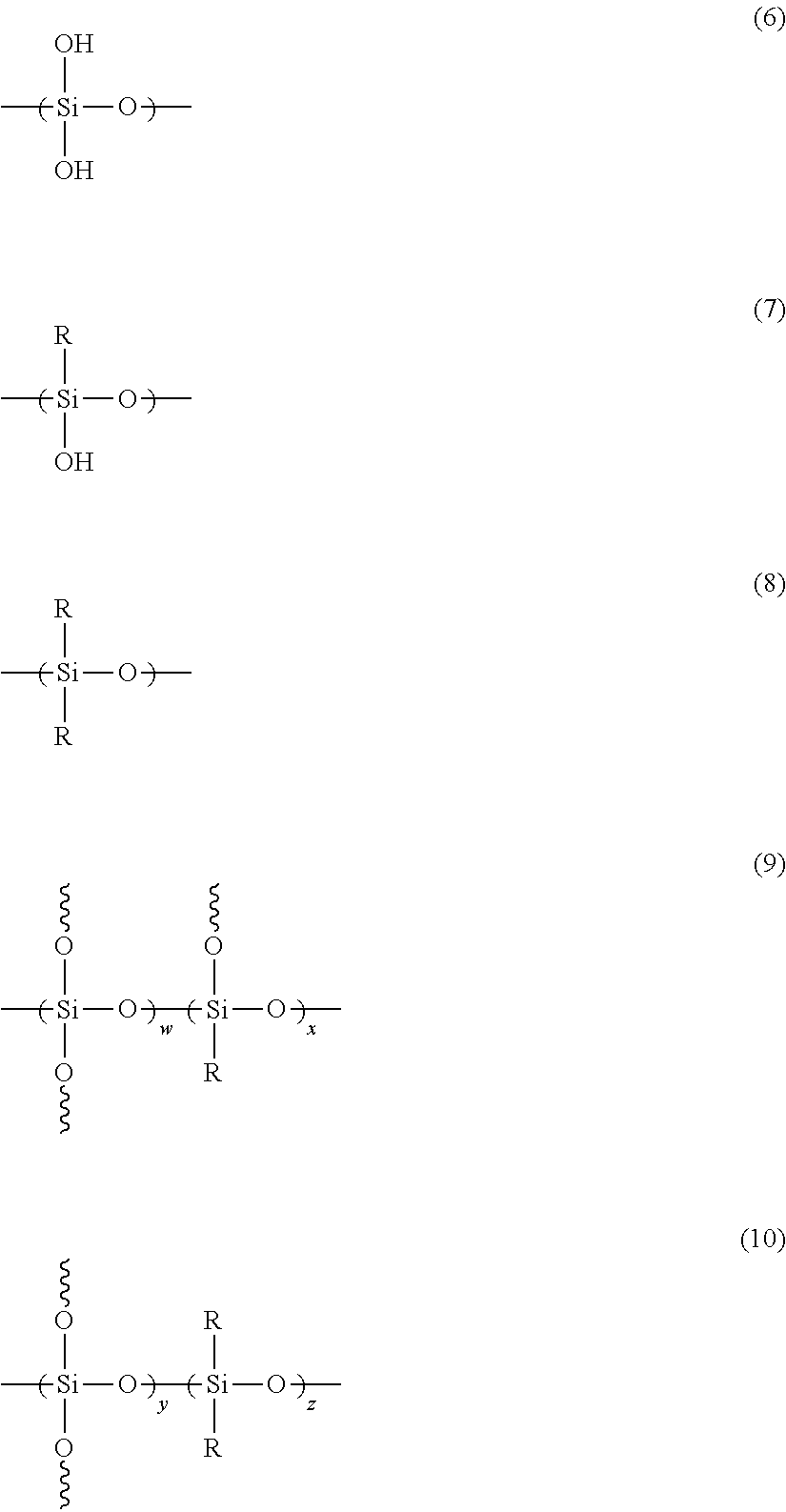Hardmask compositions for resist underlayer films
a resist and composition technology, applied in the field of hardmask compositions for resist underlayer films, can solve the problems of damage to the substrate, resist material may not provide sufficient etch resistance, arc material may provide poor etch selectivity relative to the imaging layer, etc., to achieve high compatibility with photoresist, superior long-term storage properties, and effective use of lithographic processes
- Summary
- Abstract
- Description
- Claims
- Application Information
AI Technical Summary
Benefits of technology
Problems solved by technology
Method used
Image
Examples
example 1
[0069]63.6 g of methyltrimethoxysilane and 56.4 g of methylsilicate (MS-56) were dissolved in 269 g of propolyene glycol methyl ether acetate (PGMEA) in a one-liter four-neck flask equipped with a mechanical agitator, a condenser, a 1,000-ml dropping funnel and a nitrogen feed tube. The temperature of the solution was maintained at 60° C. To this solution was added a solution of 1.2 g of p-toluenesulfonic acid monohydrate in 47.4 g of ion-exchange water over one hour. After the resulting mixture was reacted at 60° C. for 4 hours, the reaction solution was allowed to cool to room temperature. 59.5 g of the PGMEA solution containing methanol was removed from the reaction solution to obtain a sample solution.
[0070]131 g of PGMEA and 70.5 g of cyclohexanone were added to 48.12 g of the sample solution to dilute the sample solution.
example 2
[0071]A solution (0.624 g) of pyridine (10 wt %) in PGMEA was added to the diluted sample solution prepared in Example 1 to prepare a final sample solution.
example 3
[0072]29.6 g of methyltrimethoxysilane, 3.96 g of phenyltrimethoxysilane and 26.4 g of methylsilicate (MS-56) were dissolved in 134.6 g of PGMEA in a one-liter four-neck flask equipped with a mechanical agitator, a condenser, a 1,000-ml dropping funnel and a nitrogen feed tube. The temperature of the solution was maintained at 60° C. To the solution was added a solution of 0.6 g of p-toluenesulfonic acid monohydrate in 23.2 g of ion-exchange water over one hour. After the resulting mixture was reacted at 60° C. for 4 hours, the reaction solution was allowed to cool to room temperature. 28.8 g of the PGMEA solution containing methanol was removed from the reaction solution to obtain a sample solution.
[0073]131 g of PGMEA and 70.5 g of cyclohexanone were added to 48.12 g of the sample solution to prepare a diluted sample solution.
PUM
| Property | Measurement | Unit |
|---|---|---|
| temperature | aaaaa | aaaaa |
| w/w | aaaaa | aaaaa |
| total weight | aaaaa | aaaaa |
Abstract
Description
Claims
Application Information
 Login to View More
Login to View More - R&D
- Intellectual Property
- Life Sciences
- Materials
- Tech Scout
- Unparalleled Data Quality
- Higher Quality Content
- 60% Fewer Hallucinations
Browse by: Latest US Patents, China's latest patents, Technical Efficacy Thesaurus, Application Domain, Technology Topic, Popular Technical Reports.
© 2025 PatSnap. All rights reserved.Legal|Privacy policy|Modern Slavery Act Transparency Statement|Sitemap|About US| Contact US: help@patsnap.com



